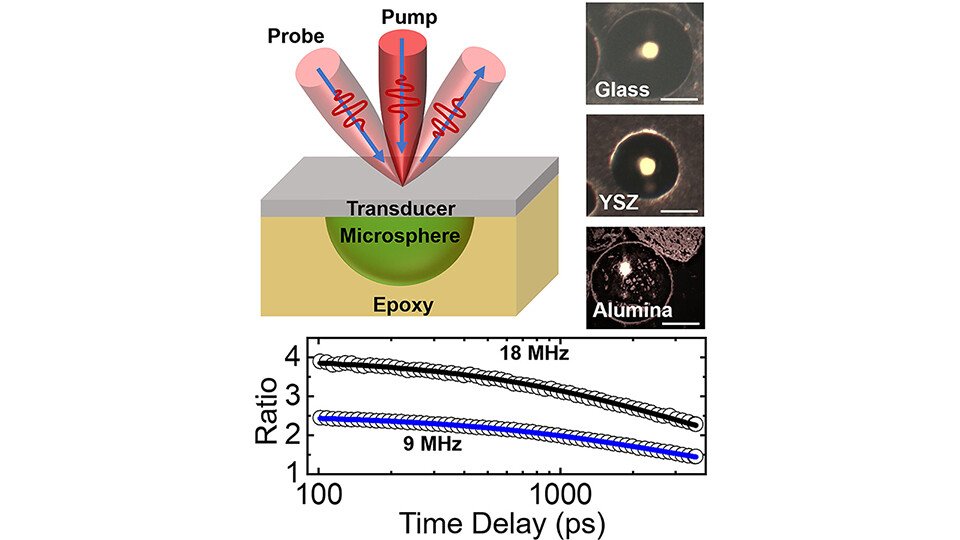Xiaojia Wang's Group Develops New Method for Measuring Thermal Properties of Microparticles

A new method reported by ME Associate Professor Xiaojia Wang's group shows some deviations between bulk and microscale thermal conductivity for inorganic particles embedded in epoxy resin.
Thermal composites can potentially address heat dissipation issues in miniature electronics, so understanding the thermal properties of these materials can help engineers design more efficient devices. Recently, Wang’s group reported a method to directly measure the thermal properties of microparticles as typical fillers for industrial thermal composites. To accurately determine the thermal performance of ceramic microspheres (as popular industrial filler materials for thermal composites), the team embedded the microspheres into epoxy and measured their thermal conductivities using time-domain thermoreflectance, an ultrafast laser-based technique. The team found the thermal conductivities of these ceramic microspheres differ from their bulk counterparts, and strongly depend on the structural features of these microspheres. Knowing the true value of the thermal conductivity of fillers produced industrially is critical for advancing the thermal management technology platform at companies like 3M.
The group's results have been published in Applied Physics Letters and featured as Editor’s Pick. A Scilight article highlighting this work can be found from the journal webpage. They hope this work will serve as a basis for studying materials and properties beyond those in the study.
“The methods in this article could be straightforwardly applied to many other microscopic filler materials,” corresponding author Xiaojia Wang said. “Further studies may include elucidating the role of microstructure and phase composition on the thermal conductivity of micron-scale fillers.” Co-author Victor Ho, technical supervisor at 3M, added, “Knowing the true value of the thermal conductivity of fillers produced industrially is critical to our thermal management technology platform.”
